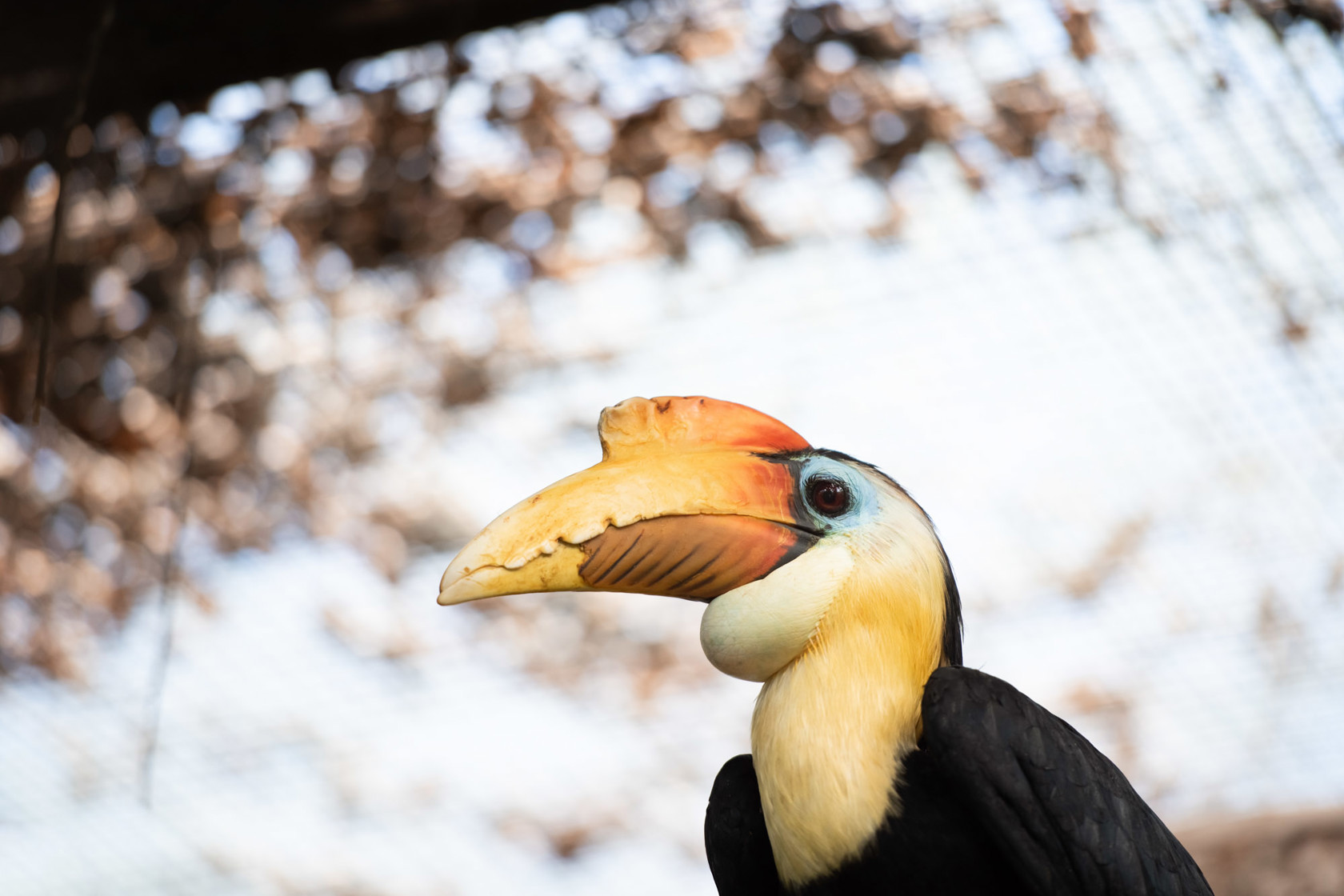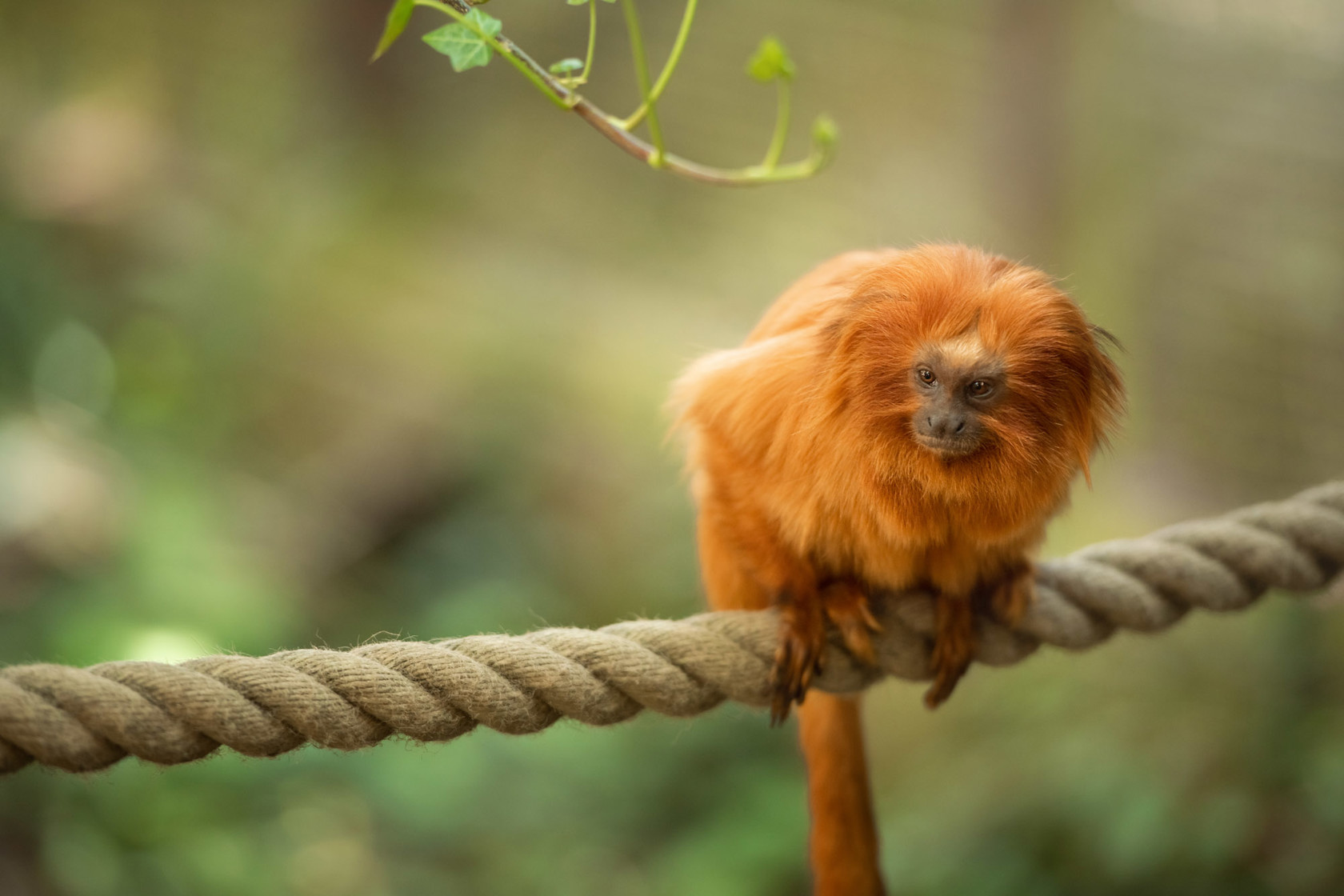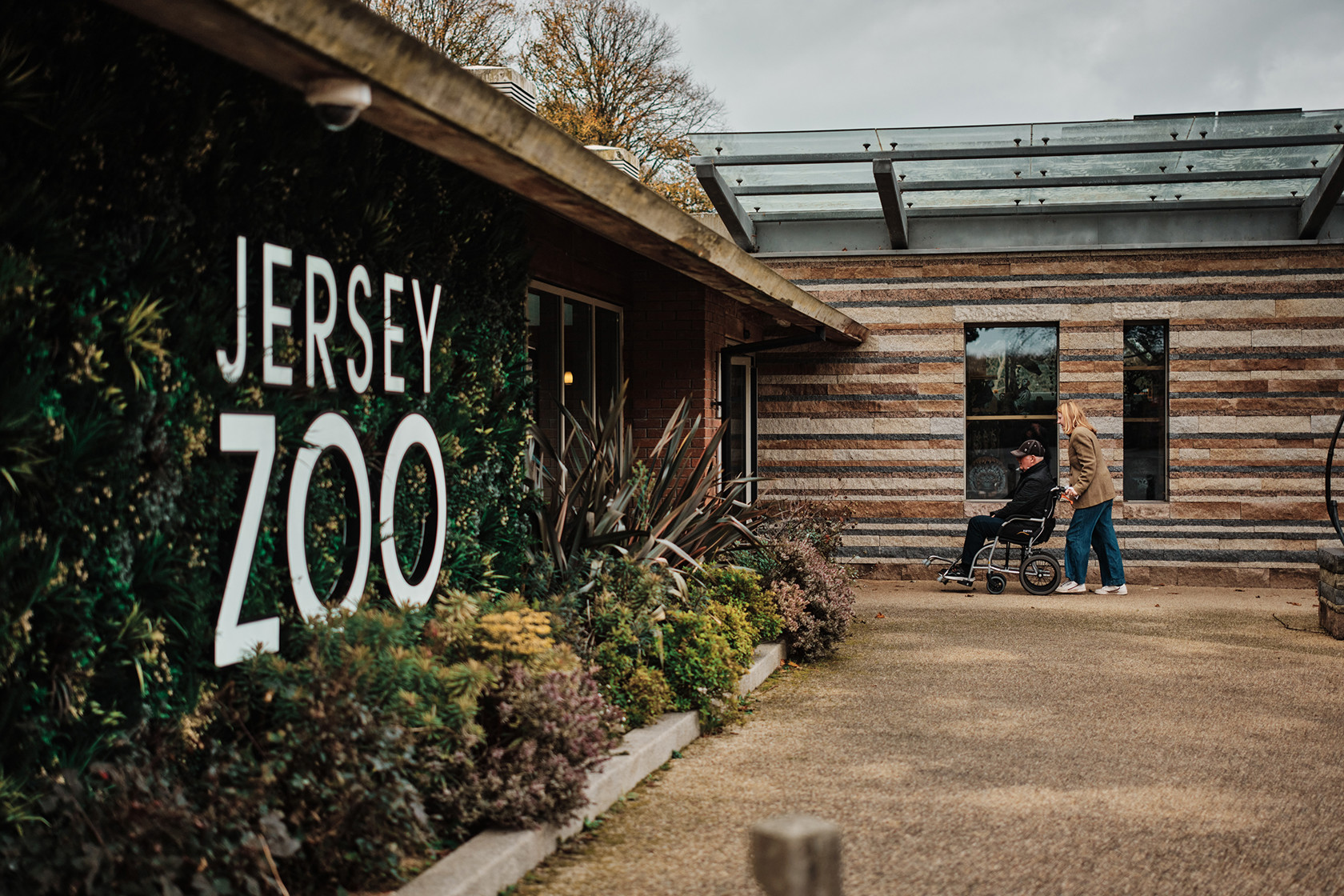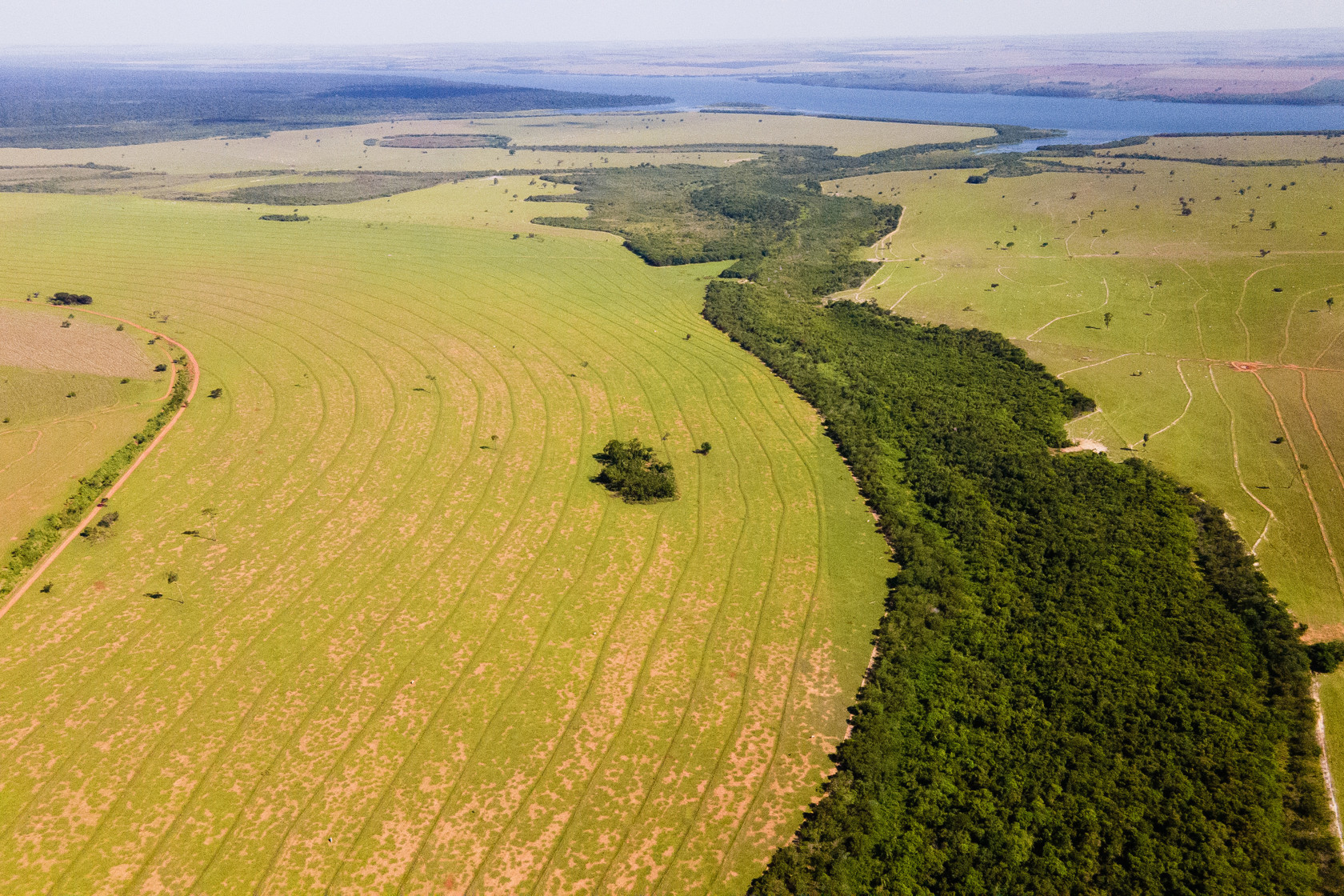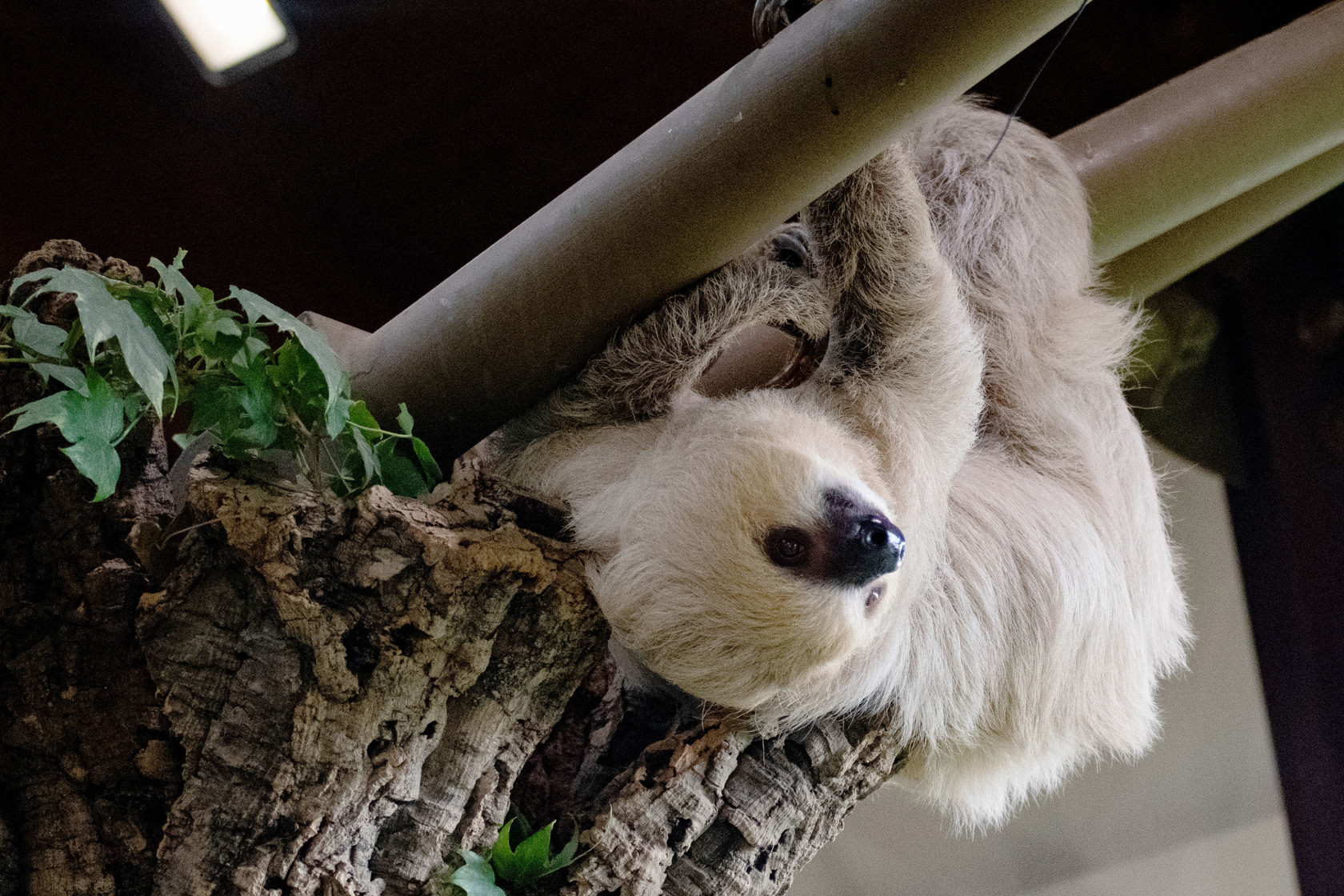Durrell returns precious pink pigeons to Mauritius
Last month, three pink pigeons bred at Jersey Zoo were returned to their native island of Mauritius, where they joined the in-country captive breeding programme with the aim of returning missing genes to the wild population.
These precious birds are the descendants of individuals brought to Jersey Zoo by Gerald Durrell in the late 1970s. It was around this time that the pink pigeon was considered to be one of the rarest birds in the world, with just ten individuals thought to remain in the wild. After its population declined rapidly due to deforestation and the introduction of invasive predators, the pink pigeon was brought back from the brink of extinction and is now celebrated as a true conservation success story.
It was Gerald Durrell, alongside the Mauritian Wildlife Foundation, National Parks and Conservation Service, and Forestry Service, that established the first-ever captive breeding programme in an attempt to save the species. As well as setting up a captive breeding population in Mauritius, Gerald also brought a number of birds back to his zoo in Jersey in the event of a localised disease or disaster in Mauritius leading to the complete loss of the species.
Durrell’s Deputy Head of Birds Harriet Whitford, who accompanied the birds during their translocation to Mauritius, said, “Durrell has held this beautiful pigeon for 40 years and is incredibly proud to be returning these birds to ensure the genetic health, and survival of this enigmatic species in its homeland. This repatriation will hopefully be the first of many, and is an example of the vital role zoos can play in helping to prevent the extinction of a species”.
Kevin Ruhomaun, Deputy Director of the National Parks and Conservation Service in Mauritius said, “Once in Mauritian territory, the birds were quarantined for a period of three to four weeks in an aviary of Bras d'Eau National Park before being sent to the Gerald Durrell Endemic Wildlife Sanctuary in Black River for the needs of the breeding program. At the same time, Durrell and other zoos will continue to breed birds that will eventually be repatriated to Mauritius in the years to come."
Currently, the population of pink pigeons is reported to be stable at around 470 individuals in the wild. Conservation efforts have resulted in the species being downlisted from ‘Endangered’ to ‘Vulnerable’ on the IUCN Red List of Threatened Species in 2018, meaning that the species is now considered to be less at risk of extinction.
Monitoring genetic diversity is an important part of conserving wildlife, as a greater genetic variability helps to maintain the health of a population, provides better protection against disease and pests, and makes a species more adaptable to environmental changes.
Vikash Tatayah, Conservation Director of the Mauritian Wildlife Foundation, said, "A study of the genome map of the species by the University of East Anglia showed a genetic diversity of about 8% that was not present in birds living in the wild; the local population was genetically impoverished. With the repatriation of these birds, which have different genetics, we will be able to reinforce the generations to come. We are at a stage of conservation and rehabilitation of a threatened species rarely seen, even at the international level.”
Although the wild population of pink pigeons is currently stable, the species is still faced with the same threats; invasive predators and a limited and deteriorated habitat. Thanks to companies such as the Mauritius Commercial Bank, Medine Horizon Foundation and SWAN Group Foundation, the project is still receiving the support it needs.
The translocation of the pink pigeons, as well as Harriet Whitford’s travel to Mauritius, was kindly funded by a private donor and the Air Mauritius Foundation, which is committed to supporting other repatriations in the future.
Photo credits: Gregory Guida (pink pigeons) and Durrell (Harriet Whitford in Mauritius)
These precious birds are the descendants of individuals brought to Jersey Zoo by Gerald Durrell in the late 1970s. It was around this time that the pink pigeon was considered to be one of the rarest birds in the world, with just ten individuals thought to remain in the wild. After its population declined rapidly due to deforestation and the introduction of invasive predators, the pink pigeon was brought back from the brink of extinction and is now celebrated as a true conservation success story.
It was Gerald Durrell, alongside the Mauritian Wildlife Foundation, National Parks and Conservation Service, and Forestry Service, that established the first-ever captive breeding programme in an attempt to save the species. As well as setting up a captive breeding population in Mauritius, Gerald also brought a number of birds back to his zoo in Jersey in the event of a localised disease or disaster in Mauritius leading to the complete loss of the species.
Durrell’s Deputy Head of Birds Harriet Whitford, who accompanied the birds during their translocation to Mauritius, said, “Durrell has held this beautiful pigeon for 40 years and is incredibly proud to be returning these birds to ensure the genetic health, and survival of this enigmatic species in its homeland. This repatriation will hopefully be the first of many, and is an example of the vital role zoos can play in helping to prevent the extinction of a species”.
Kevin Ruhomaun, Deputy Director of the National Parks and Conservation Service in Mauritius said, “Once in Mauritian territory, the birds were quarantined for a period of three to four weeks in an aviary of Bras d'Eau National Park before being sent to the Gerald Durrell Endemic Wildlife Sanctuary in Black River for the needs of the breeding program. At the same time, Durrell and other zoos will continue to breed birds that will eventually be repatriated to Mauritius in the years to come."
Currently, the population of pink pigeons is reported to be stable at around 470 individuals in the wild. Conservation efforts have resulted in the species being downlisted from ‘Endangered’ to ‘Vulnerable’ on the IUCN Red List of Threatened Species in 2018, meaning that the species is now considered to be less at risk of extinction.
Monitoring genetic diversity is an important part of conserving wildlife, as a greater genetic variability helps to maintain the health of a population, provides better protection against disease and pests, and makes a species more adaptable to environmental changes.
Vikash Tatayah, Conservation Director of the Mauritian Wildlife Foundation, said, "A study of the genome map of the species by the University of East Anglia showed a genetic diversity of about 8% that was not present in birds living in the wild; the local population was genetically impoverished. With the repatriation of these birds, which have different genetics, we will be able to reinforce the generations to come. We are at a stage of conservation and rehabilitation of a threatened species rarely seen, even at the international level.”
Although the wild population of pink pigeons is currently stable, the species is still faced with the same threats; invasive predators and a limited and deteriorated habitat. Thanks to companies such as the Mauritius Commercial Bank, Medine Horizon Foundation and SWAN Group Foundation, the project is still receiving the support it needs.
The translocation of the pink pigeons, as well as Harriet Whitford’s travel to Mauritius, was kindly funded by a private donor and the Air Mauritius Foundation, which is committed to supporting other repatriations in the future.
Photo credits: Gregory Guida (pink pigeons) and Durrell (Harriet Whitford in Mauritius)

